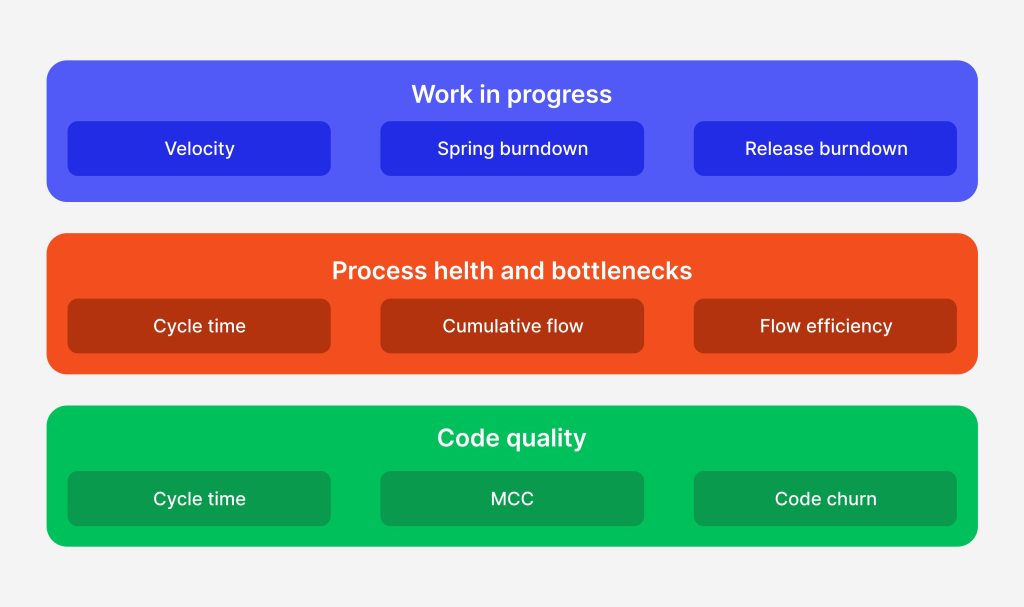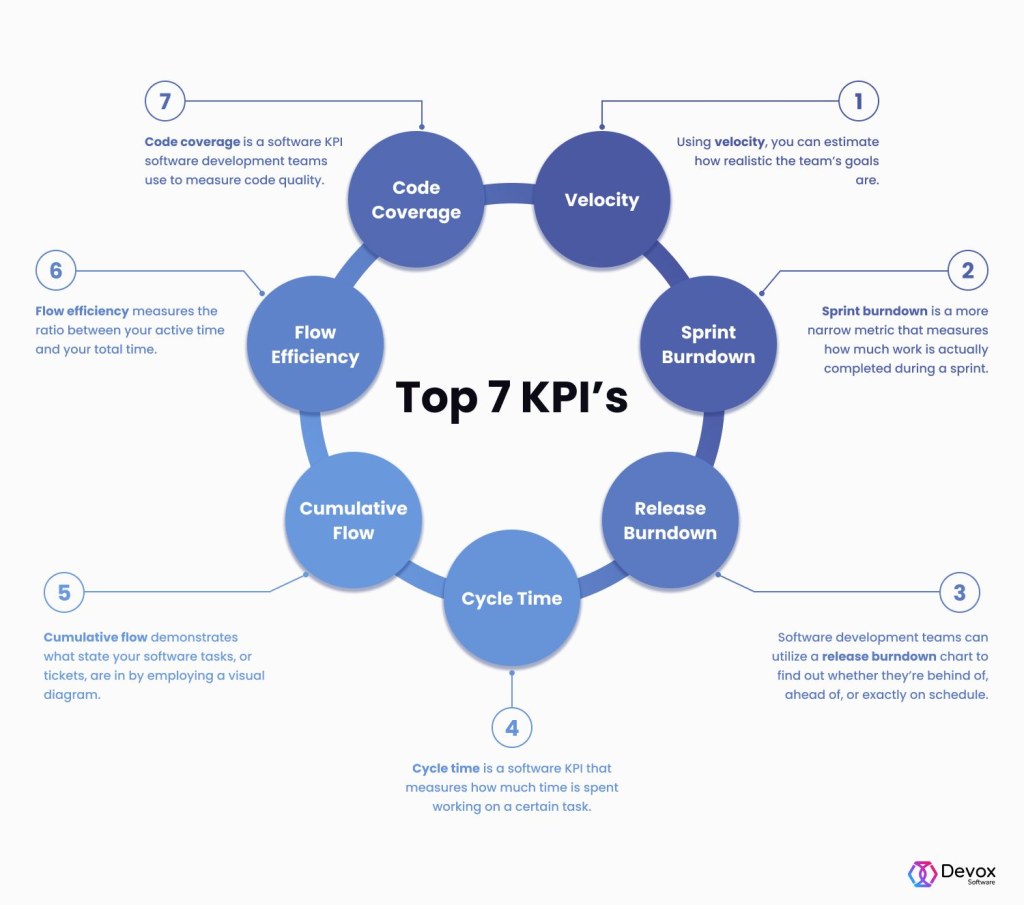Supercharge Your Software Development With Cutting-Edge KPI Metrics: Optimize Performance And Drive Results!
Software Development KPI Metrics
Introduction
Hello Readers,
2 Picture Gallery: Supercharge Your Software Development With Cutting-Edge KPI Metrics: Optimize Performance And Drive Results!


Welcome to this article on software development KPI (Key Performance Indicator) metrics. In today’s fast-paced and competitive world, measuring and improving the performance of software development teams has become crucial for organizations. KPI metrics provide valuable insights into the effectiveness and efficiency of development processes, enabling teams to identify areas for improvement and drive success. In this article, we will explore the importance of software development KPI metrics and how they can contribute to the success of your projects.
Table of Contents

Image Source: prismic.io
1. What are software development KPI metrics?
2. Who can benefit from using software development KPI metrics?
3. When should you start measuring software development KPI metrics?

Image Source: devoxsoftware.com
4. Where can you collect data for software development KPI metrics?
5. Why are software development KPI metrics important for your team?
6. How can you implement software development KPI metrics effectively?
7. Advantages and disadvantages of software development KPI metrics
8. Frequently Asked Questions (FAQ)
9. Conclusion
10. Final Remarks
What are software development KPI metrics?
Software development KPI metrics are quantifiable measurements used to evaluate and track the performance of software development processes. These metrics provide insights into various aspects of the development lifecycle, such as productivity, quality, efficiency, and customer satisfaction. By capturing and analyzing relevant data, organizations can make data-driven decisions, identify bottlenecks, and optimize their development processes.
Who can benefit from using software development KPI metrics?
Software development KPI metrics can benefit various stakeholders involved in the software development lifecycle. This includes project managers, development teams, quality assurance professionals, and even executives. Project managers can use KPI metrics to monitor the progress of projects, identify risks, and ensure timely delivery. Development teams can leverage these metrics to improve their performance, identify areas for process optimization, and enhance collaboration. Quality assurance professionals can use KPI metrics to measure the effectiveness of testing efforts and drive continuous improvement. Executives can gain valuable insights into the overall health and performance of development initiatives.
When should you start measuring software development KPI metrics?
It is never too early to start measuring software development KPI metrics. Ideally, organizations should incorporate KPI metrics from the project planning phase itself. By setting clear and measurable goals, organizations can track their progress and make informed decisions throughout the development lifecycle. However, if you haven’t been measuring KPI metrics so far, it’s never too late to start. Implementing KPI metrics can provide immediate benefits and help you drive improvements in your future projects.
Where can you collect data for software development KPI metrics?
Data for software development KPI metrics can be collected from various sources within your organization. This includes project management tools, version control systems, bug tracking systems, code repositories, and even customer feedback platforms. It is important to identify and collect relevant data points that align with your organizational goals and objectives. By leveraging existing data sources and implementing data collection mechanisms, you can ensure a consistent and reliable flow of data for your KPI metrics.
Why are software development KPI metrics important for your team?
Software development KPI metrics play a crucial role in driving the success of your team and projects. They provide valuable insights into the performance of your development processes, enabling you to identify bottlenecks, measure progress, and make data-driven decisions. KPI metrics can help you monitor and improve productivity, track the quality of deliverables, optimize resource allocation, enhance customer satisfaction, and drive continuous improvement. By setting clear goals and tracking relevant KPI metrics, you can ensure the success of your software development initiatives.
How can you implement software development KPI metrics effectively?
Implementing software development KPI metrics effectively requires careful planning and execution. Here are some key steps to follow:
1. Define clear and measurable goals: Clearly define the objectives and outcomes you want to achieve with your software development initiatives. Ensure that your goals are specific, measurable, achievable, relevant, and time-bound (SMART).
2. Identify relevant KPI metrics: Identify the key metrics that align with your goals and objectives. Some common software development KPI metrics include code quality, defect density, velocity, lead time, customer satisfaction, and team productivity.
3. Establish data collection mechanisms: Set up processes and tools to collect relevant data for your KPI metrics. Integrate your project management tools, version control systems, and other data sources to ensure a seamless flow of data.
4. Analyze and interpret data: Regularly analyze your KPI metric data to gain insights into the performance of your development processes. Identify trends, patterns, and areas for improvement.
5. Drive continuous improvement: Use the insights gained from your KPI metrics to drive continuous improvement in your development processes. Implement corrective actions, optimize workflows, and foster a culture of learning and growth.
By following these steps, you can effectively implement software development KPI metrics and drive the success of your projects.
Advantages and Disadvantages of software development KPI metrics
Advantages:
1. Objective measurement: KPI metrics provide objective measurements that enable organizations to evaluate and compare performance across teams, projects, and initiatives.
2. Data-driven decision-making: KPI metrics help organizations make data-driven decisions by providing insights into performance, bottlenecks, and areas for improvement.
3. Continuous improvement: KPI metrics drive a culture of continuous improvement by identifying areas for optimization and fostering accountability.
4. Goal alignment: KPI metrics ensure that development efforts are aligned with organizational goals and objectives, improving overall efficiency and effectiveness.
Disadvantages:
1. Overemphasis on metrics: Excessive focus on metrics can lead to a narrow perspective, neglecting other essential aspects of software development, such as creativity and innovation.
2. Inaccurate measurements: Incorrect or incomplete data can lead to inaccurate measurements and misinterpretation of performance.
3. Lack of context: KPI metrics may lack context and fail to capture the complexity and nuances of software development processes.
4. Resistance to change: Introducing KPI metrics may face resistance from team members who perceive it as micromanagement or a threat to their autonomy.
Frequently Asked Questions (FAQ)
1. What are the most common software development KPI metrics?
Common software development KPI metrics include code quality, defect density, velocity, lead time, customer satisfaction, and team productivity.
2. How often should you measure KPI metrics?
The frequency of measuring KPI metrics depends on the nature and scale of your projects. However, regular and consistent measurement is recommended to track progress and identify trends.
3. Can KPI metrics be used for both agile and traditional software development methodologies?
Yes, KPI metrics can be tailored to suit both agile and traditional software development methodologies. The key is to define relevant metrics that align with the specific goals and objectives of each methodology.
4. How can KPI metrics help improve customer satisfaction?
KPI metrics such as customer satisfaction scores can help teams identify areas for improvement and address customer pain points, leading to enhanced customer satisfaction.
5. Are there industry-specific KPI metrics for software development?
Yes, some industries may have specific KPI metrics based on their unique requirements and challenges. For example, the healthcare industry may focus on KPI metrics related to patient safety and data security.
Conclusion
In conclusion, software development KPI metrics are essential tools for measuring and improving the performance of development processes. By implementing relevant metrics, organizations can gain valuable insights, identify areas for improvement, and drive the success of their projects. It is important to define clear goals, collect relevant data, analyze performance, and drive continuous improvement based on the insights gained. By leveraging software development KPI metrics effectively, organizations can optimize their development processes, enhance productivity, and deliver high-quality software products.
Final Remarks
Dear Readers,
In today’s competitive landscape, measuring and improving the performance of software development teams is crucial for success. Software development KPI metrics provide valuable insights into the effectiveness and efficiency of development processes, enabling teams to identify areas for improvement and drive success. However, it is important to use these metrics judiciously and not solely rely on them. Metrics should be seen as a means to an end, with a focus on continuous improvement and delivering value to customers. Remember to adapt and tailor the metrics to suit your specific organizational goals and objectives. Best of luck in your software development endeavors!
This post topic: Programming

